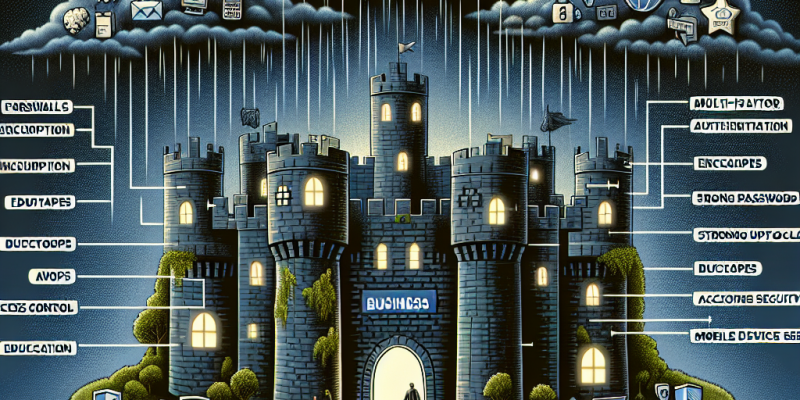Top 10 Cybersecurity Tips Every Business Should Implement Today

In an increasingly digital world, cybersecurity is no longer optional for businesses of all sizes. Cyber threats have grown more sophisticated, targeting vulnerabilities in systems and human behavior alike. Here are the top 10 cybersecurity tips every business should implement today to safeguard their assets and data.
1. Conduct Regular Risk Assessments
Regular risk assessments help identify vulnerabilities in your systems. By understanding where your weaknesses lie, you can prioritize which areas to strengthen. Schedule these assessments at least annually, or whenever significant changes to your IT infrastructure occur.
2. Implement Strong Password Policies
Weak passwords are an invitation for cybercriminals. Mandate complex password requirements that include a mix of letters, numbers, and symbols. Enforce routine password changes, and consider using a password manager to help employees generate and store strong passwords securely.
3. Enable Multi-Factor Authentication (MFA)
Implement multi-factor authentication to add an additional layer of security beyond just the password. Requiring a second form of identification—such as a text message code or a biometric scan—can significantly reduce the risk of unauthorized access.
4. Keep Software and Systems Updated
Outdated software often has unpatched vulnerabilities that cybercriminals exploit. Regularly update operating systems, applications, and antivirus programs to protect against the latest threats. Automate this process whenever possible to ensure nothing is overlooked.
5. Train Employees on Cybersecurity Best Practices
Humans can be the weakest link in cybersecurity. Provide comprehensive cybersecurity training for all employees, covering topics like phishing attacks, safe browsing practices, and recognizing suspicious activity. Regular refreshers can help keep security top-of-mind.
6. Develop an Incident Response Plan
Despite your best efforts, breaches can still happen. Develop a detailed incident response plan outlining how your business will respond to a cyber attack. This plan should define roles and responsibilities, establish communication protocols, and outline steps for recovery and containment.
7. Back Up Data Regularly
Data loss can occur due to cyber attacks, natural disasters, or hardware failures. Implement an automatic backup process that regularly saves your data in multiple locations. Utilize both on-site and cloud-based backups to ensure redundancy and accessibility.
8. Secure Your Network
Employ firewalls, encryption, and intrusion detection systems to safeguard your network. Ensure that your Wi-Fi connection is secure with strong encryption protocols and that guest access is segmented from your main business network.
9. Use Endpoint Protection
With the rise of remote work, endpoint security is critical. Implement comprehensive endpoint protection that includes malware detection, data loss prevention, and mobile device management solutions to monitor and secure all devices accessing your network.
10. Stay Informed About Cyber Threats
Cybersecurity is an ever-evolving field. Stay abreast of the latest threats and trends by following industry news, joining cybersecurity forums, or attending relevant webinars and conferences. Consider subscribing to threat intelligence services that notify you of potential risks and vulnerabilities relevant to your business.
Conclusion
Cybersecurity is a continuous journey that requires vigilance, awareness, and adaptation. By implementing these ten tips, businesses can significantly enhance their security posture and mitigate risks in an increasingly complex cyber landscape. Protecting your organization isn’t just about technology—it’s about fostering a culture of security awareness across every level of your organization. Start today to fortify your defenses and safeguard your business for the future.














